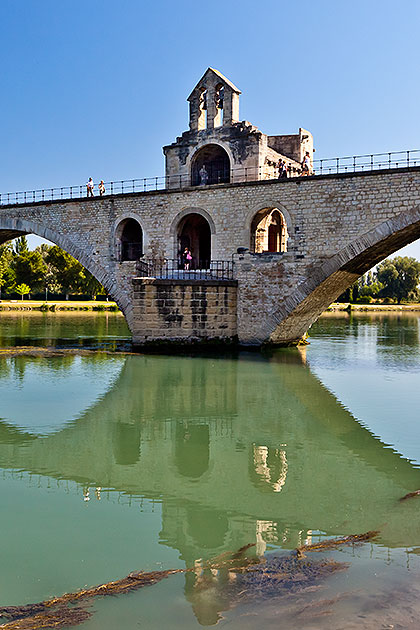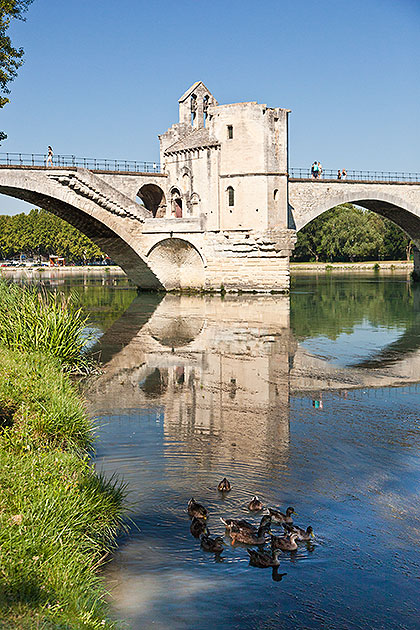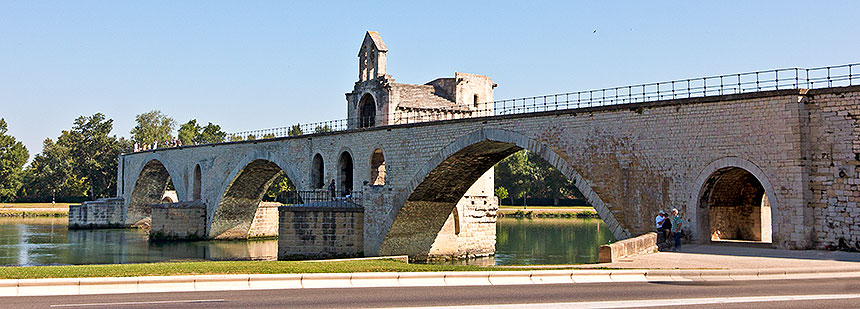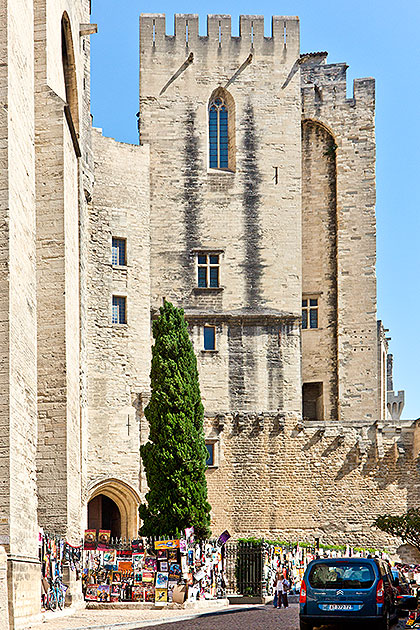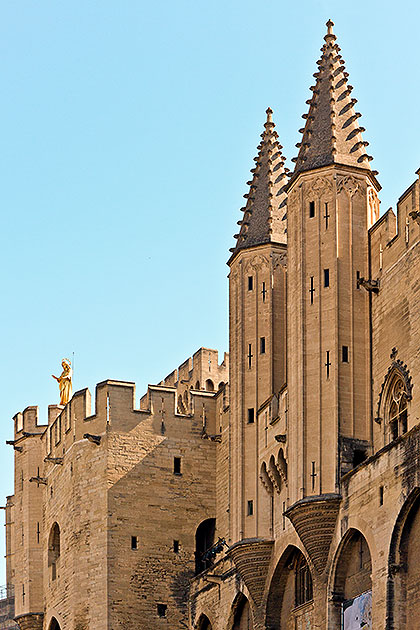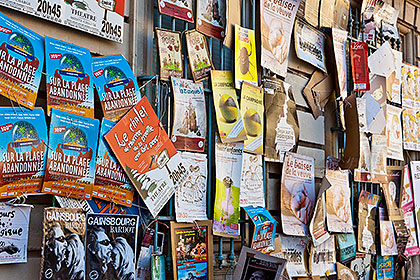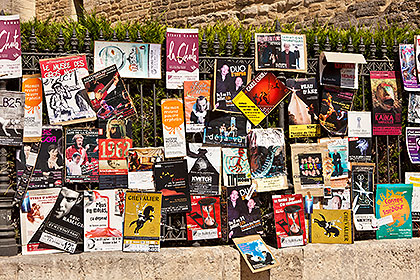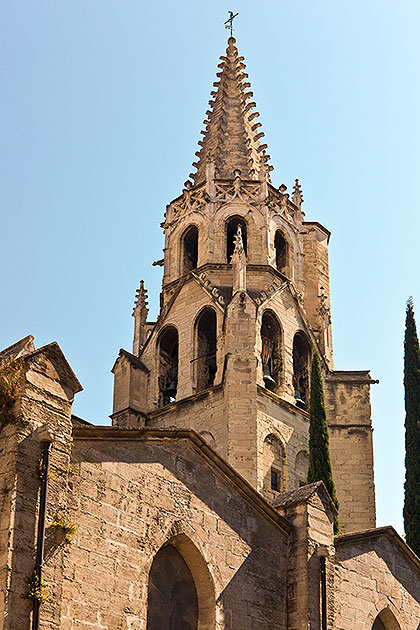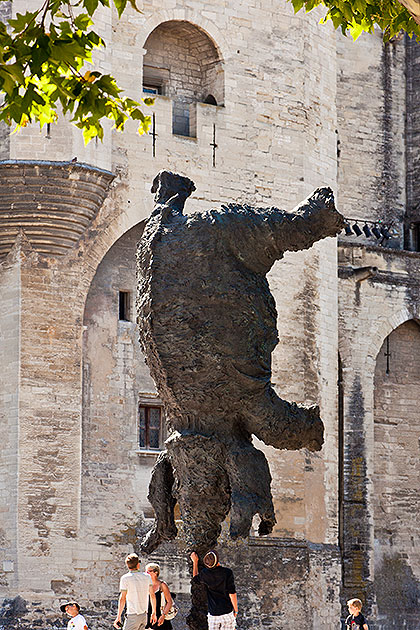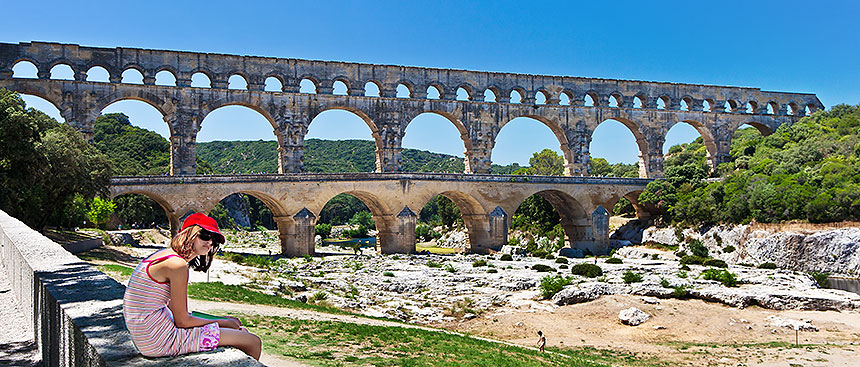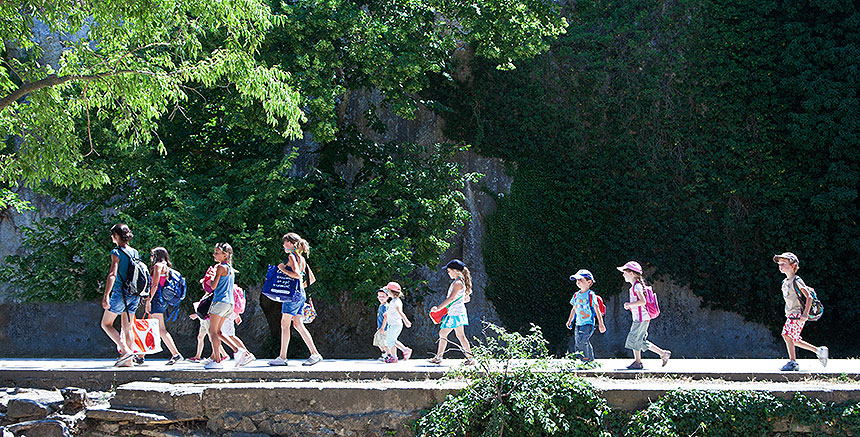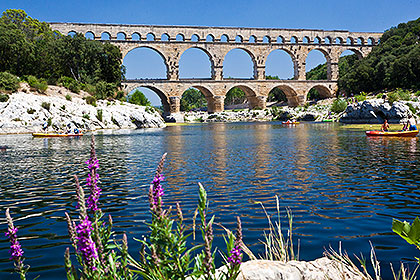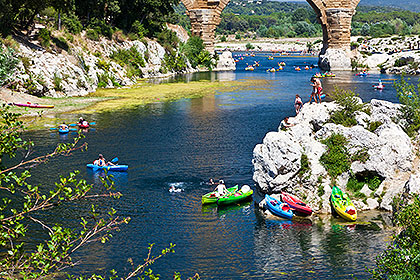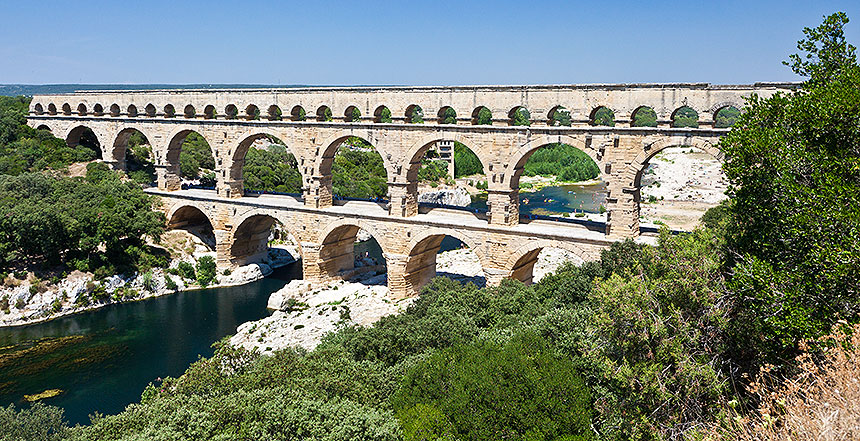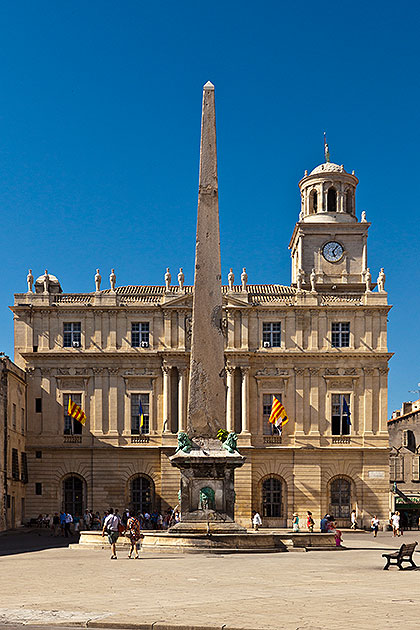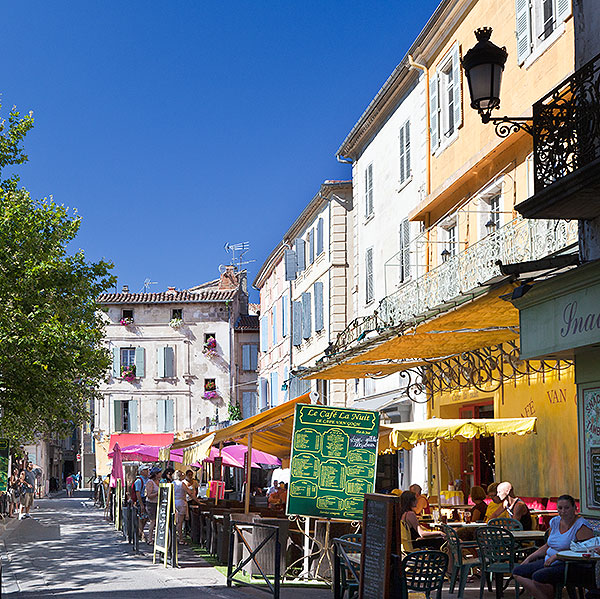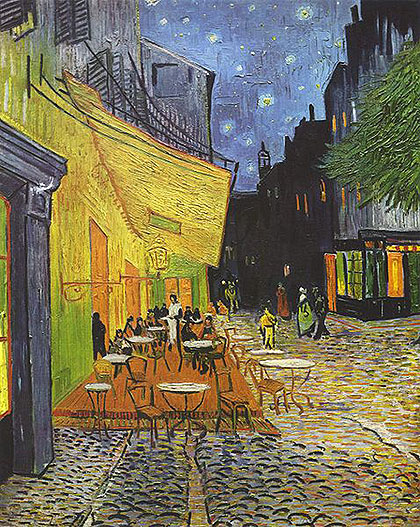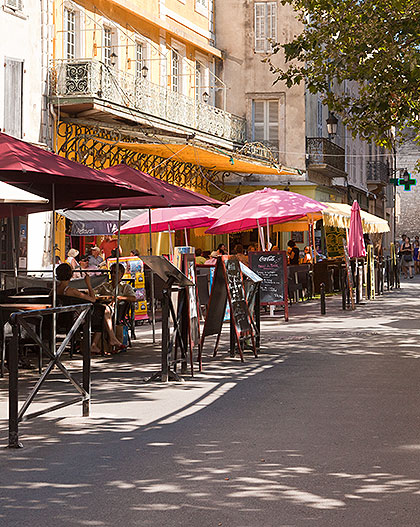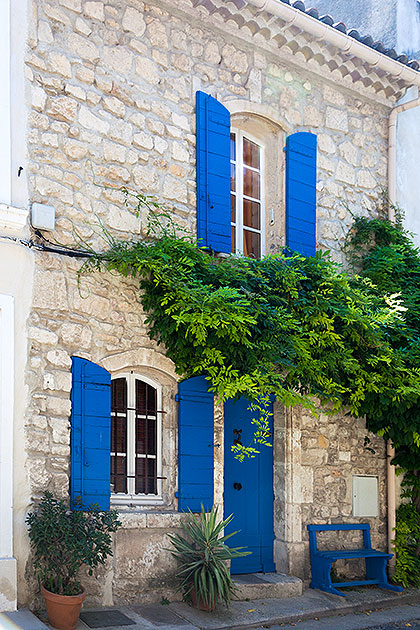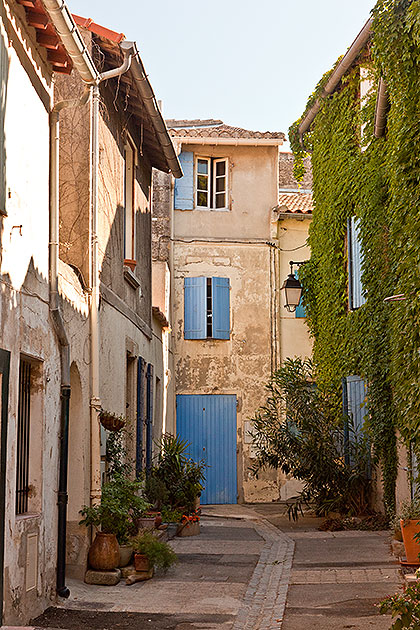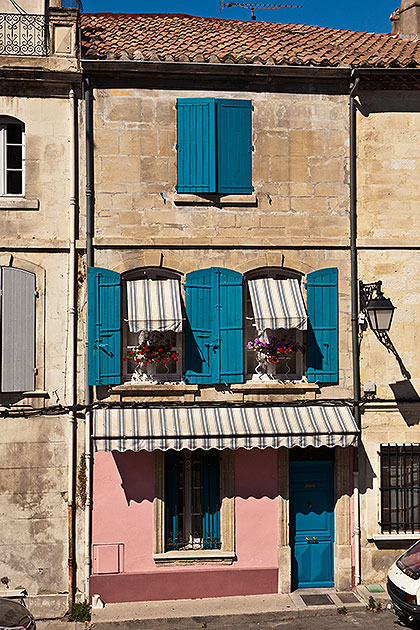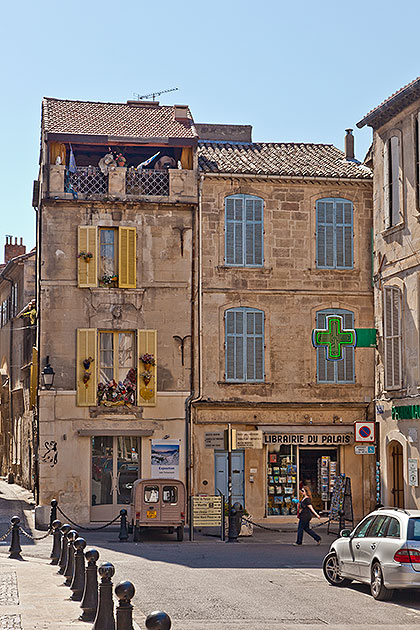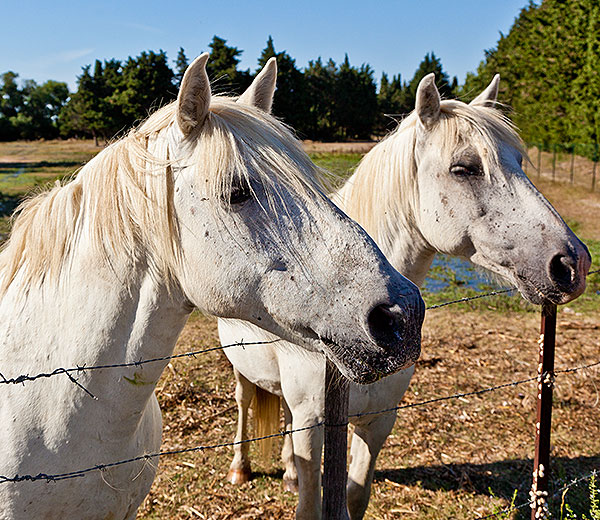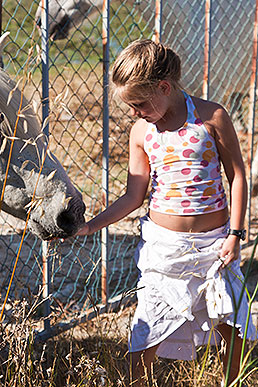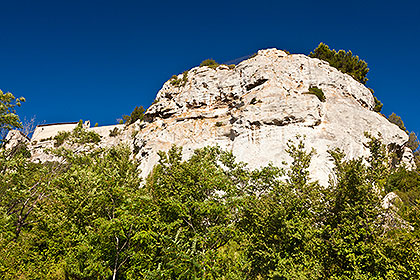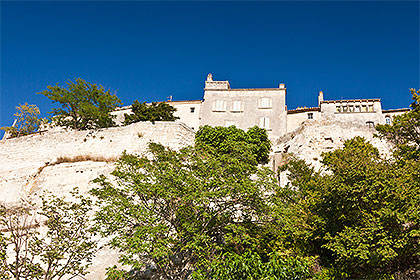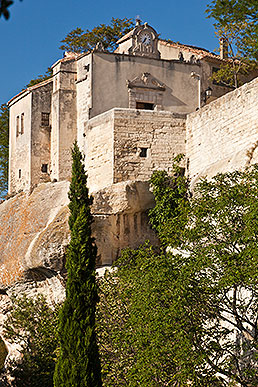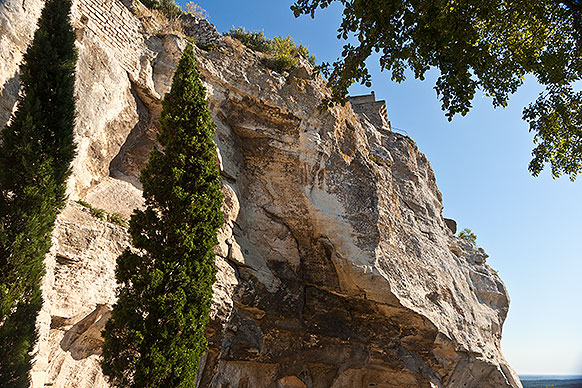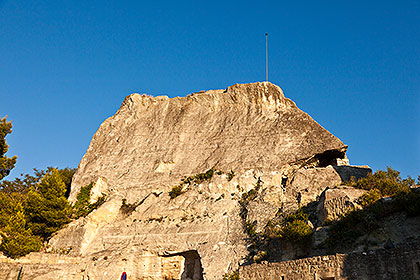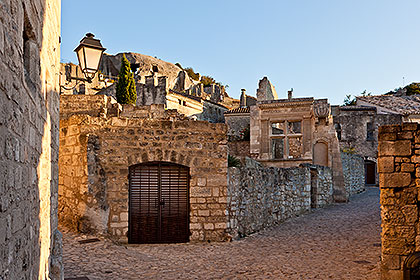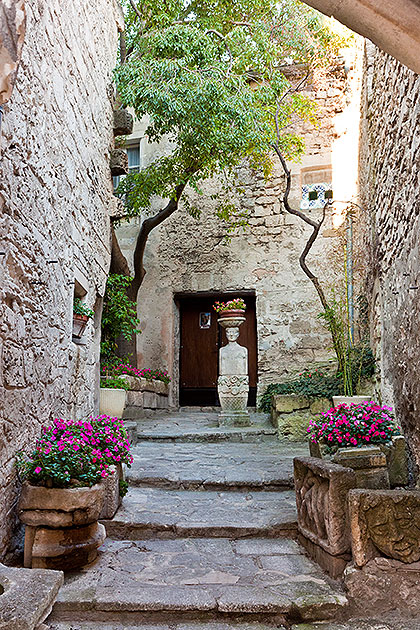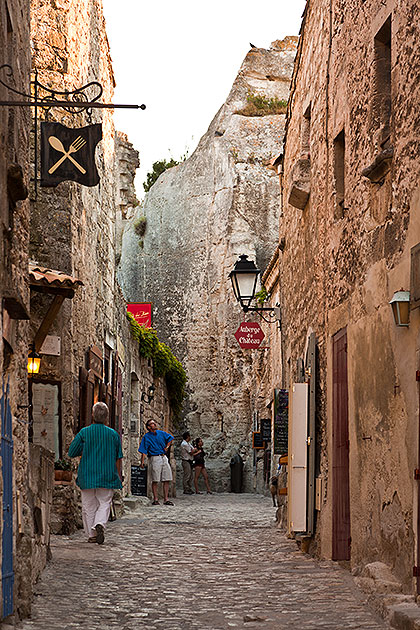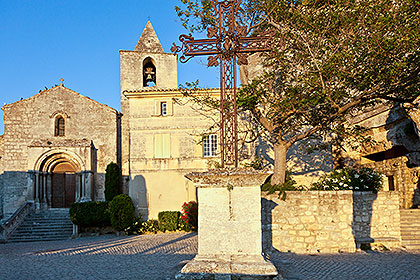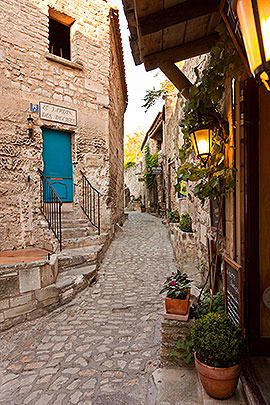West of Gordes: Avignon, Pont-du-Gard, Arles, Horses, and Les Baux-de-Provence
Today we travel west from Gordes and beyond the Plateau de Vaucluse to two larger and more famous cities, Avignon and Arles; we also visit a spectacular Roman bridge, the Pont-du-Gard, as well as a rustic village, Les Baux-de-Provence. On the way we admire some friendly horses.
Avignon
One of the chief cities of Provence, Avignon was once home to Popes, in the 14th century. They were responsible for constructing the several palaces and fortresses comprising the Palais des Papes, which dominates the city. They resided here only a few years before moving the Papacy back to Rome in 1377, though a series of antipopes carried on here for a while longer. Today, Avignon is home to a university, an opera house, several theater companies, foreign language schools, as well as museums and other attractions for tourists.

Avignon is also well known for its "bridge to nowhere", the Pont St-Benezet (also known as the Pont d'Avignon), which crosses a portion of the Rhone River before abruptly stopping. These four arches are all that remain of the 22 that originally made up the 12th century bridge. The others were lost to numerous collapses over several centuries following its completion. The children's song "Sur le pont d'Avignon" commemorates this bridge.
The 16th century Chapelle St-Nicolas rests atop one of the bridge's pedestals. It is seen here from two sides.
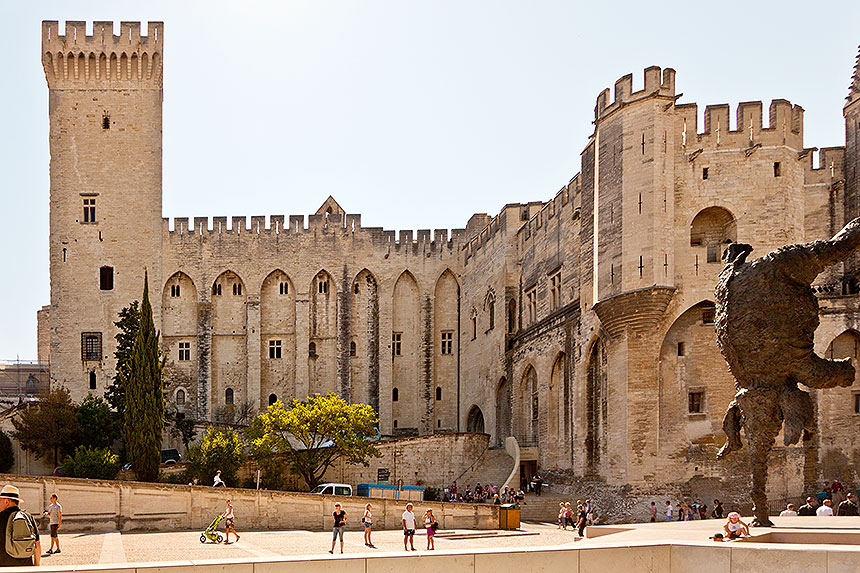
This is the northwest facade of the Palais des Papes. In its entirety the Palais des Papes is the largest medieval Gothic palace in Europe.
Palais des Papes: southeast towers (left) and steeple-like towers above the principal gate on the west side (right).
We are annoyed to discover that Avignon is so thoroughly plastered with posters that many points of interest are effectively obscured.
Pont-du-Gard
Located a few miles west of Avignon, the Pont-du-Gard was constructed by the Romans starting in 19BC, for the purpose of supporting the aqueduct serving the important city of Nimes and carrying it across the Gard River. The highest of all Roman aqueduct bridges, the three-tiered structure was constructed entirely of stone, with no use of mortar except in the walls of the aqueduct itself. The first level also served as a road bridge, while the aqueduct occupied the highest level. Now a UNESCO World Heritage site, it is a major attraction for locals and tourists alike.
The central arch (near left in this photo) spans 80 feet, the widest of all Roman bridges.
The river and the area around the bridge is a major recreational attraction. Above, children on their way to a picnic by the river.
Arles
Further down the Rhone River is Arles, another Roman city. If not for the well known residency of Vincent Van Gogh, Arles might be best known for its Roman amphitheater, Les Arenes, which could seat 20,000, and is still in use today.
Front facade of Les Arenes.
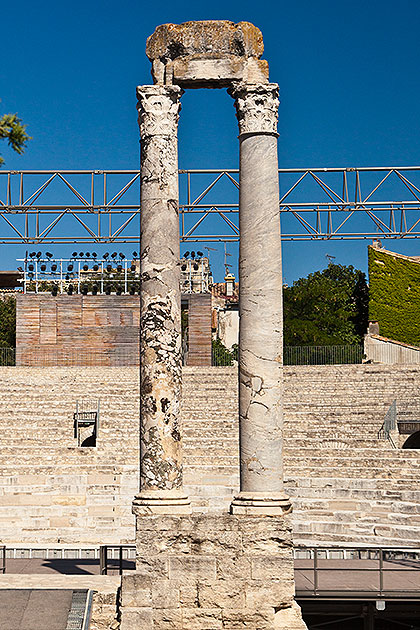
Another Roman theater with hemispherical seating for 2,000, had previously been a fortress. Most of its stones were taken for other projects, leaving only these columns, the "two widows".
Le Cafe La Nuit has been renovated to look like it did in Vincent Van Gogh's Terrasse du cafe le soir canvas.
Van Gogh lived in Arles only 15 months, during which he completed over 300 paintings.
Horses, near Fontvieille
On our way from Arles to Les Baux-de-Provence, we stopped to admire these horses next to the road.
Les Baux-de-Provence
This dramatic fortress village sits on a rocky outcrop in the Alpilles Mountains. The site was inhabited as early as 6,000 BC, and was used as a fortress by the Celts at least as far back as the second century BC. Now a major attraction for tourists, we are lucky to visit it in late evening, when most of them have left.
